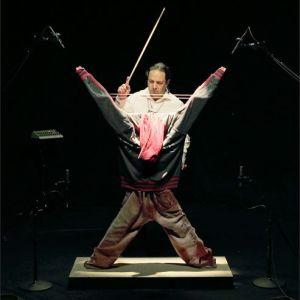
Richard Misrach's "Wall, Jacumba, California" in “Border Cantos / Sonic Borders" -- through June 5.
Saturday, February 19, through Sunday, June 5
Figge Art Museum, 225 West Second Street, Davenport IA
A collaboration between American photographer Richard Misrach and Mexican-American artist and composer Guillermo Galindo, the pair's combined museum piece Border Cantos / Sonic Borders will grace Davenport's Figge Art Museum through June 15, the artists' work exploring the complexities of the southern border through photography, sculpture, and sound, inviting us to bridge boundaries and initiate important conversations.
With their exhibition humanizing the Mexican-American border and inviting visitors to engage with the complex and often misunderstood experiences of those seeking a better life in the United States, Border Cantos / Sonic Borders finds Misrach and Galindo addressing fraught topics touching on politics, the environment, and humanitarian issues. Misrach is well-known for his expansive images focusing on the ways humans interact with and impact the natural world, while Galindo is inspired by the Mesoamerican belief that one can bring out the spiritual essence of an object's past. Galindo's 260-minute composition Sonic Borders, which can be heard playing within the gallery, employs eight musical instruments the artist created from objects discarded near the border. Taken together, the photographs, objects, and sonic composition introduce distinct yet interrelated ways of experiencing the human consequences of immigration policies. By offering evidence of those who have journeyed through the borderlands in pursuit of their hopes and dreams, Misrach and Galindo encourage empathy for the plight of migrants everywhere.
Over the course of his career, Misrach has photographed the deserts of the American West, and made a series documenting the changes brought to bear on the environment by various man-made factors such as urban sprawl, tourism, industrialization, floods, fires, petrochemical manufacturing, and the testing of explosives and nuclear weapons by the military. Curator Anne Wilkes Tucker wrote that Misrach's practice has been "driven [by] issues of aesthetics, politics, ecology, and sociology," and David Littlejohn of The Wall Street Journal calls Misrach "the most interesting and original American photographer of his generation." In a 2011 interview, Misrach himself noted: "My career, in a way, has been about navigating these two extremes – the political and the aesthetic," while in a description of his philosophy, the New York Times' Tracey Taylor noted that "[Misrach's] images are for the historical record, not reportage."

Galindo began his career writing more traditional Western classical music, and in 1997, he wrote Ome Acatl, a symphony based on the proportions and symbolism of the Aztec calendars for the OFUNAM orchestra. His subsequent work Trade Routes was performed by the Oakland East Bay Symphony in 2005, taking inspiration from the streets of Oakland, California. In 2006, Galindo began composing experimental music, and according to Art in America, Galindo also began “building his own instruments, performing compositions on them himself or improvising with them,” including audience participation in his pieces. The publication stated further that in created his instruments, he “redefines the borders set by musical convention … [and] listens to found objects and, in effect, lets them speak as they will."
Border Cantos / Sonic Borders will be on display to the public February 19 through June 5, with regular museum hours 10 a.m. to 5 p.m. on Tuesdays through Saturdays (10 a.m. to 9 p.m. on Thursdays) and noon to 5 p.m. on Sundays. Museum admission is $4-10, and for more information, call (563)326-7804 and visit FiggeArtMuseum.org.










